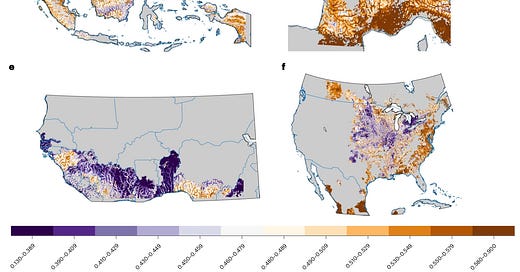We need to feed 8 billion people in the world. And to do that, agriculture has become increasingly mechanised and intensified. With this intensification of crop production has come increased environmental damage. Thanks to a new study, we can now see where agriculture is sustainable and where it is not on a granular, regional level.
The study looked at satellite images of crop production and the environmental damage it causes regarding water stress, greenhouse gas emissions, land occupation and phosphorus and nitrogen fertiliser application.
As a rule, the study showed that no crop has the same impact, and its planting location can change its environmental impact significantly. For example, the ecological impact of crops like soybeans or palm oil decreases further away from oceans, lakes, and rivers where they are planted because less fertiliser runoff enters water reservoirs. Similarly, the higher the crops are grown, the larger their environmental impact. Land at higher altitudes can support fewer crops and requires more intensive farming to generate the same yield.
With the help of this new index, the researchers were also able to estimate the production of crops and compare it to its impact on the environment. The chart below shows the environmental impact of agricultural crop production of palm oil in Southeast Asia (top left) and soybean in France (top right), the US (bottom right) and West Africa (bottom left). Brown colours indicate excessive environmental impact and destructive use of land to grow crops. In contrast, blue colours indicate a sustainable use of land where the production of crops outweighs the environmental impact.
Environmental sustainability of crop production
Source: Jwaideh and Dalin (2025). Note: Top left: palm oil in Southeast Asia, top right: soybeans in France, bottom right: soybeans in the US, bottom left: soybeans in West Africa.
As you can see, the study indicates that palm oil production in Southeast Asia, as well as soybean production in Europe, is heavily damaging to the environment and should be improved to reduce the environmental impact. Meanwhile, soybean production in West Africa or the US is environmentally sustainable.





I recommend you now research the successes and failures of centralised planning of food production in certain socialist regimes of the 20th Century. You may then conclude that 8 Billion people may be able to feed themselves if they are given the freedom to do so. Its a very slippery slope that you are promoting here.